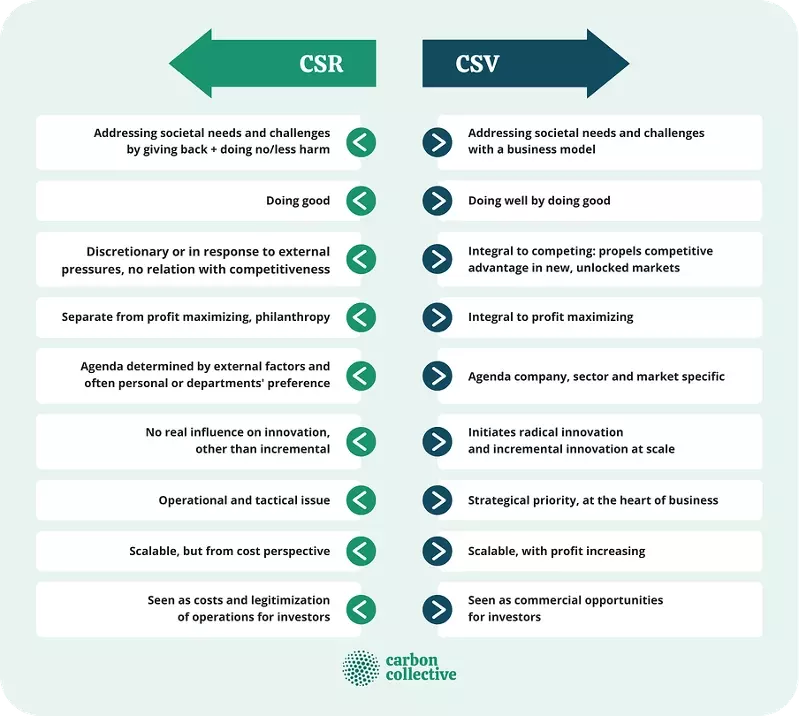Maybe it was Enron, Lehman Brothers, or Bear Stearns. Perhaps it was the divisiveness of mega media outlets that are meant to inform and educate us, not terrify and mislead us. But somewhere along the way, I grew exhausted by how many stories there are about large companies exploiting the wellbeing of small communities, organizations, and individuals. And for what? A more than necessary financial gain? Greed? Ambivalence? Whatever the reason was, I have become a much more conscious consumer in many areas of my life.
As such, in 2015, I returned to school to focus on developing initiatives and media that impacted the world in a positive manner. Two professors, Mark Moore and Jim Bildner, offered a course called “Sparking Social Change.” In this class, I heard, “There is no greater abuse than to offer hope to others and then to take it away.” Since then, I have been keenly curious about how to implement programs that are sustainable and beneficial to the greater good but practical for the capitalist world in which many of us live. This led me to the shared value framework—a topic that is on the rise. So, let’s explore: What is shared value in the workplace?
What is Shared Value? (And How to Implement A Strategy at Your Organization)
Shared value is a business theory—first introduced in 2011 by Michael Porter and Mark Kramer in the Harvard Business Review—that intrinsically links economic growth to social responsibility. It’s a framework for creating economic value while simultaneously addressing societal needs and challenges. The authors explain that for business to move forward, “the purpose of the corporation must be redefined as creating shared value, not just profit per se. This will drive the next wave of innovation and productivity growth in the global economy. It will also reshape capitalism and its relationship to society, and legitimize business again as a powerful force for positive change.”
As the demand for business to be sustainable and socially responsible has grown in recent years, many corporations have embraced creating shared value (CSV) as part of their business framework. The theory is now driving purpose as well as strategy. At the same time, especially in the wake of COVID-19, purpose in business has become integral to a company’s culture, employee retention, and survival. While CSV and shared values will never be perfectly synonymous, we are in a moment when they are working in tandem to redefine business practices and corporate culture. To put this into practice, Kramer and Porter site three main principles for shared value:
- Reconceiving products and markets by meeting societal needs through products and serving unserved and underserved customers.
- Redefining productivity in your value chain by using resources, energy, suppliers, logistics, and employees differently.
- Strengthening cluster development (i.e. local and regional business environment) by improving skills, the supplier base, the regulatory environment, and the supporting institutions that affect the business.
Businesses that have done this successfully
While no company has been built entirely on the CSV framework, many organizations have applied the principles to make improvements. Examples include:
- A leading energy provider developed a global healthcare initiative to provide better medical care through innovations that lowered costs, increased access, and improved quality of care, all while creating a new market base.
- An international hotel chain implemented an online tool to help control energy consumption and reduce costs while protecting the environment. The tool also attracts eco-conscious guests.
- A large food and beverage company developed ongoing financial and training assistance to create a better and more consistent supply network that benefits both the farmers’ and organization’s bottom line. It provides farmers with more supply channels, more earning opportunities, and a better quality of life.
- A technology company developed free education software for classrooms to help students, schools, and communities succeed.
- A financial services firm invested in diversity and inclusion by creating products and services that support underserved communities of color and women as well as youth in underprivileged communities. As a result, it has cultivated a customer base mostly overlooked by other investment institutions.
The theory of creating shared value (CSV) is that companies can help society while making a profit.
What is the difference between CSV, CSR, and ESG?
Sometimes it is easy to confuse Corporate Social Responsibility (CSR) and CSV. CSR is about companies giving back to society without any financial benefit to themselves. It is based in philanthropy and charity. Porter and Kramer believed that CSV should replace CSR. Porter especially believed that companies should not be spending shareholder money subjectively (per executives’ preferences or personal passions) on charitable works. The theory of CSV is that companies can help society while making a profit: by creating products that have a positive social impact, ensuring that creation and distribution minimize environmental impact, and by supporting and developing the communities that support production. While Porter’s vision of CSV replacing CSR did not come to pass, CSR has been adopted into the CSV platform. This graphic illustrates the differences:

Environmental social governance (ESG) is another division of modern business devoted to creating positive social impact and sustainability. ESG works in tandem with CSV and CSR. Where CSV and CSR create and implement programs, ESG is primarily tasked with the gathering and reporting of corporate data regarding sustainable (social impact) initiatives.
Shared value in corporate culture
Shared value was created as a business strategy—a reimagining of product creation, supply chains and manufacturing methods that would positively impact (external) stakeholders, the environment, community, and society, while also creating profit. It did not originally concern itself with the corporate culture of the company, personal values, or mission statements. As corporate culture and (internal) stakeholders have become more vital to the sustainability of business, creating shared value in corporate culture initiatives has become more commonplace.
“Shared value success requires more than great strategy,” says Dane Smith in his article for FSG. “Companies cannot successfully implement their most promising shared value ideas, unless they have leaders and employees who believe in the strategy and are committed to changing practices that stand in the way.”
What does internal CSV look like?
- Corporate culture centered around the company’s mission, especially when the company’s goal is socially impactful
- Company values that focus on its employees and its commitment to a human-centric work culture
- Ensuring wellness programs, schedule flexibility, and work-life balance for all employees
- Creating safe spaces to discuss and actively support diversity, equity, inclusion, and belonging
For example, a major food supplier was struggling with constant turnover in entry-level positions. To solve this, it created shared value in employment practices by turning to vulnerable populations in the communities where they did business, instituting training initiatives to overcome the literacy, numeracy, and skills barriers that kept those populations from finding gainful employment. In return, the organization built a loyal, well-training employee base.
Initiatives like UKG’s Employee Expectation Gap Analysis tool are helpful for companies to gauge if their employees feel personally connected to their company’s shared value commitments within corporate culture.
Purpose as a shared value in corporate culture
In recent years, especially in the wake of the COVID-19 pandemic, purpose has become integral to corporate culture, particularly when recruiting and holding on to top talent. Great Place To Work recently released their 2023 report, “The Power of Purpose in the Workplace,” which focuses on today’s employees and their search for workplaces where their contribution makes a difference. This is especially true with younger generations. According to the report, “when millennials believe their work has meaning—that it’s more than “just a job”—they are three times more likely to stay. And they’re nearly two times more likely to stay if they feel their voice is valued, regardless of their position.” If employers foster a culture of purpose for their employees, businesses will see their “retention, employee wellbeing, and stock market returns improve,” asserts Great Place To Work.
When millennials believe their work has meaning they are three times more likely to stay.
How to implement shared value in your organization
Incorporating CSV into your business strategy and corporate culture should go hand in hand.
For business practices:
- Design for impact: Prioritizing “design thinking” and “systems thinking” can help companies improve outcomes with a focus on broader, more equitable stakeholder experiences. This requires a large, but not insurmountable, cultural shift for many organizations.
- Adopt circular production models: The circular economy offers trillions of dollars in financial opportunities while also significantly reducing waste and greenhouse gas emissions.
- Provide equitable access to data and technology.
- Consider fair, accountable, transparent, and ethical (FATE) artificial intelligence: Artificial intelligence (AI) exploded into the daily lives of billions of people during the 2010s and offers unprecedented opportunities for any organization.
- Put your people and the planet first.
For corporate culture:
- Assess your existing company culture: Identify gaps between where it is and where you want it to go.
- Evaluate your company’s systems: Make sure they support and reward your shared value aspirations.
- Identify the right leadership: Find and promote leaders who embody your shared value culture.
- Cultivate champions: Find employees who are influential and can encourage a cultural shift. Empower them to help implement change.
- Communicate across the organization: Openly share and discuss the relevance of social and environmental challenges to your organization and the ways these issues intersect with your business.
Shared value: Where do we go from here?
Whether shared value will ever be fully embraced as the new capitalism as envisioned by Porter and Kramer is unclear. No company has been built from the ground up on CSV, rather it is used by sectors/departments/subsidiaries. However, their theory has unquestionably left its mark on business. As its influence has spread to corporations and initiatives throughout the world, hopefully it will continue to help businesses embrace positive social impact as a business and cultural imperative. As Emmanuel Faber, CEO of Danone, says: “Your company does not exist to make a profit. It is not true. Making a profit is a way for your company to continue to exist. The reason it exists is because it has a social impact—a positive reason for people to engage with you.”



